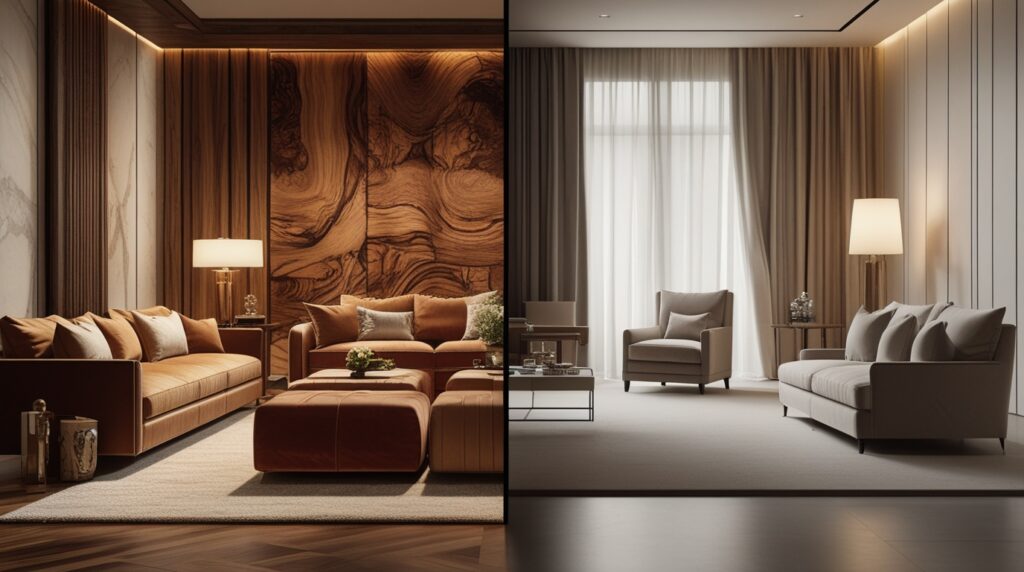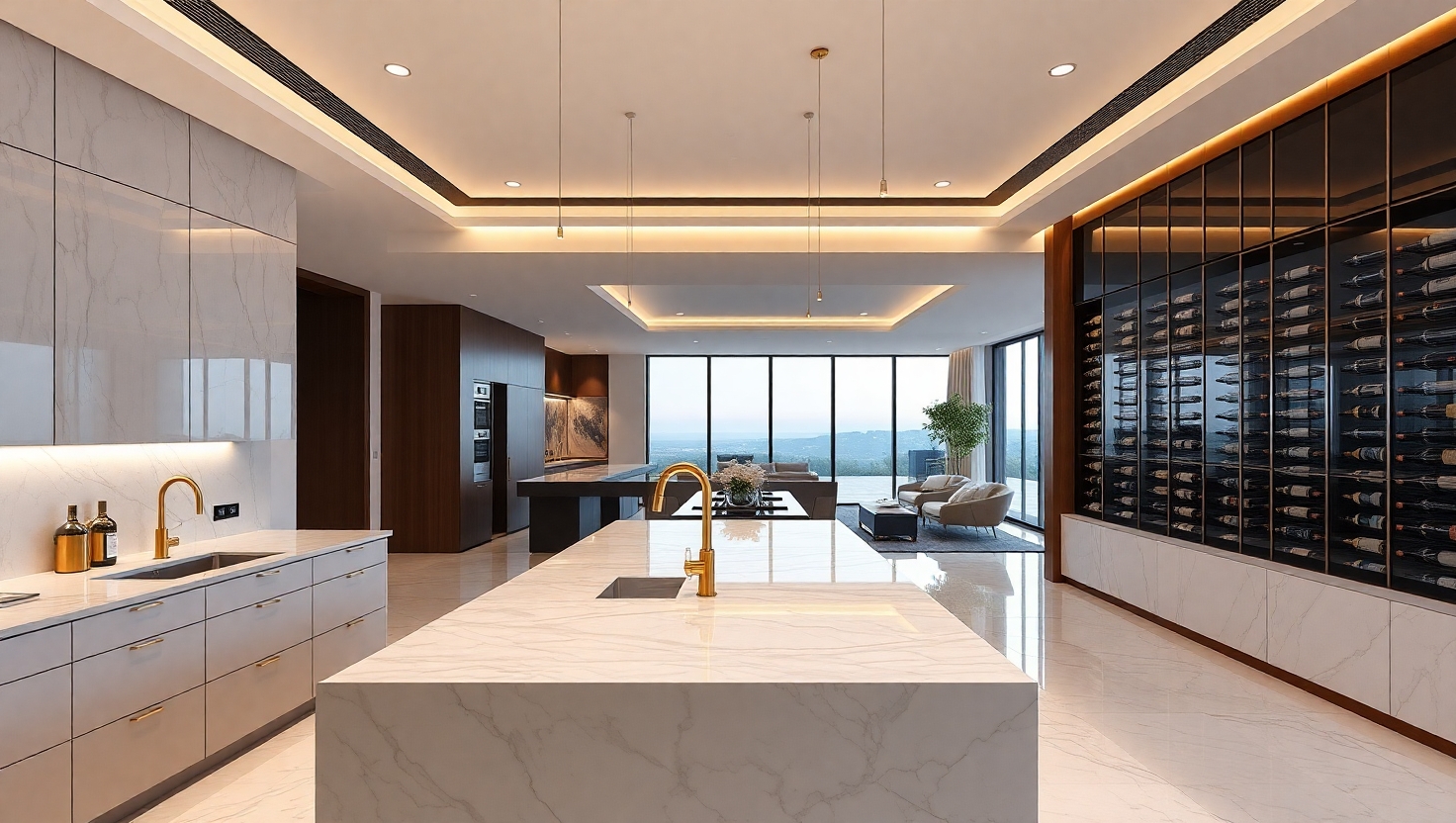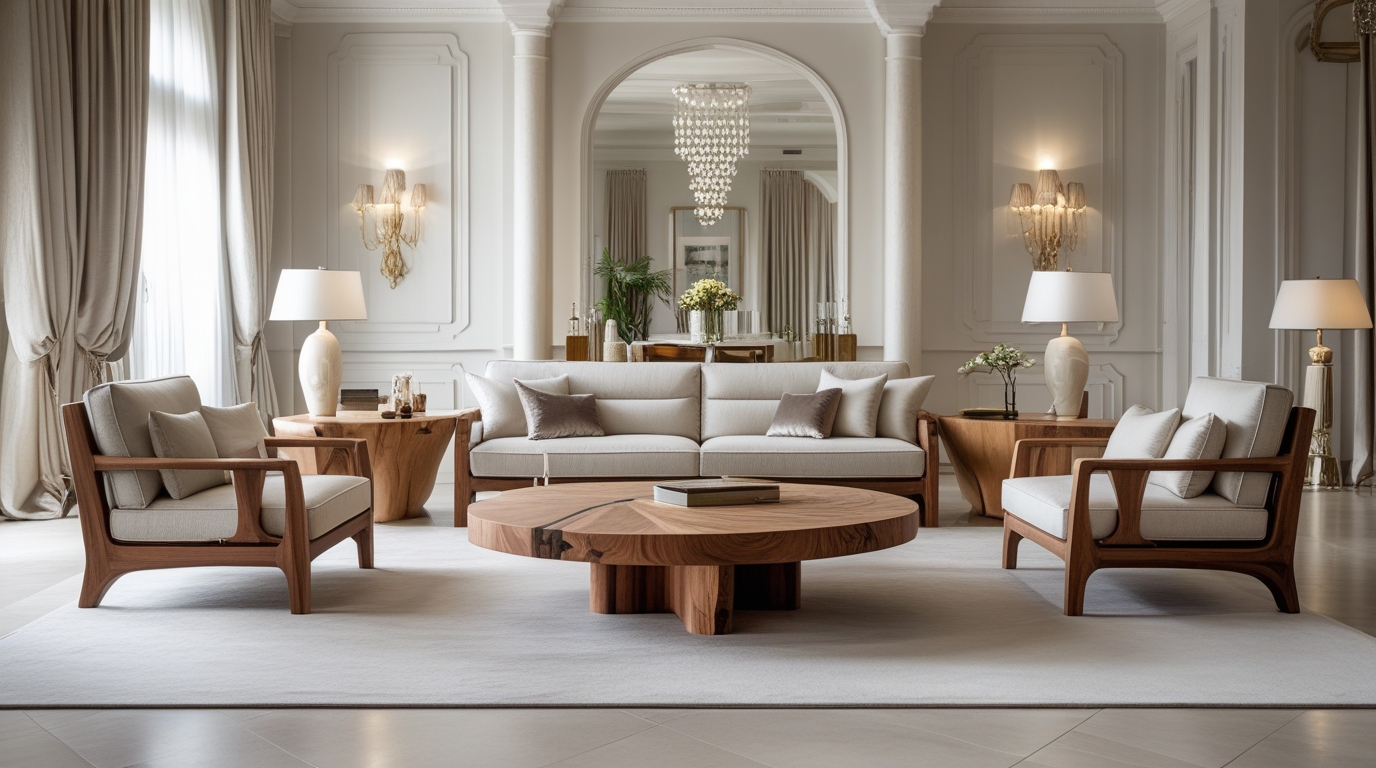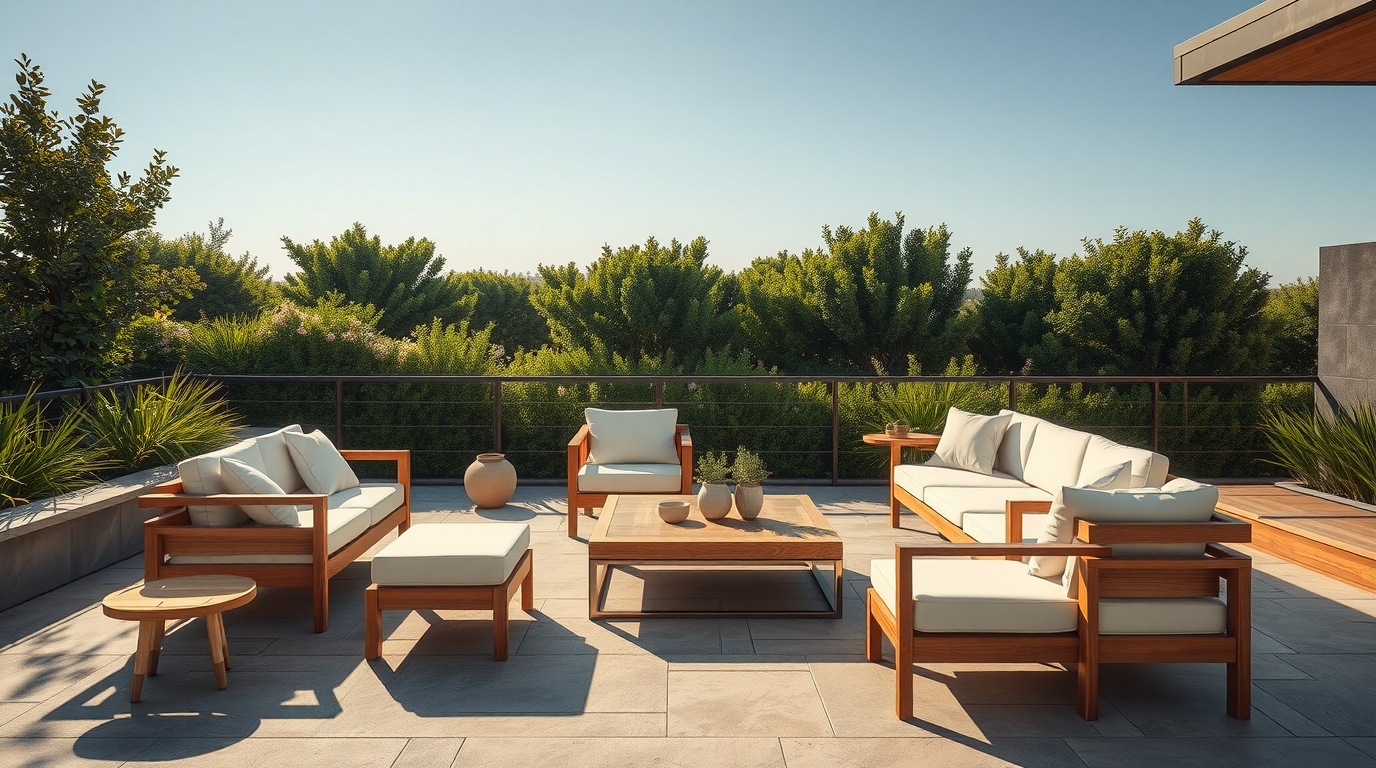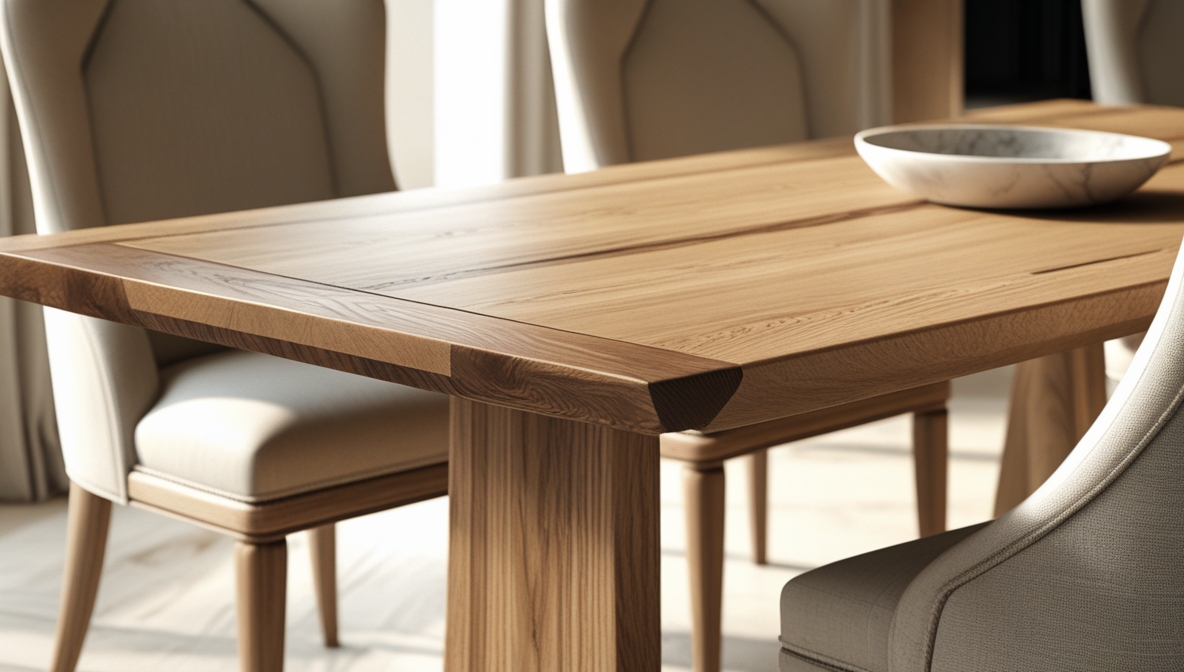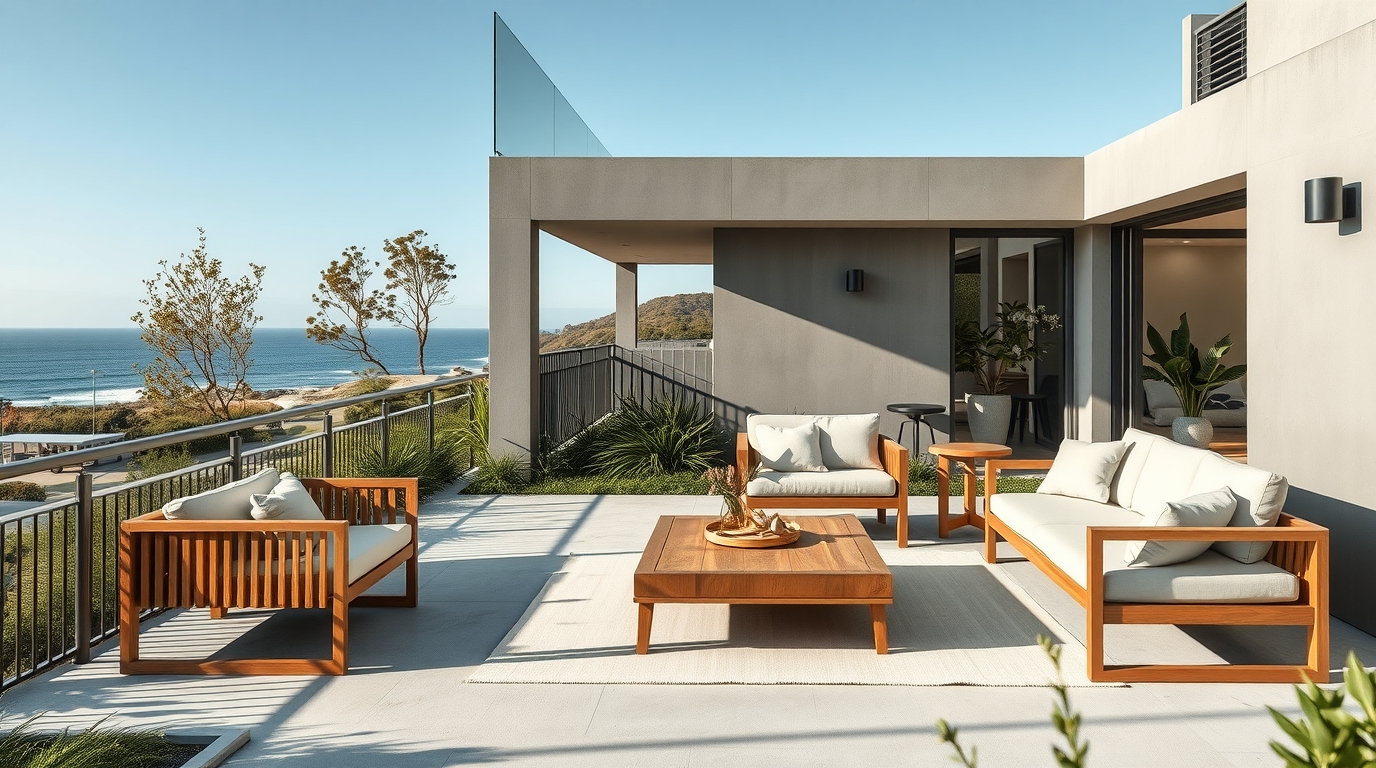Introduction: The Illusion of Luxury Without Choice
In today’s design-forward world, many retailers are quick to slap the “luxury” label onto their furniture collections. Shiny finishes, curated photography, and hefty price tags often give off an illusion of grandeur. But there’s a growing disconnect between what’s marketed as luxury and what truly is luxury. Nowhere is this more evident than in the realm of customisation.
When a so-called “luxury” furniture item can’t be tailored to your space, matched to your personal style, or crafted in the materials of your choosing, one has to ask: is it really luxury, or just expensive mass production?
True luxury furniture is not defined by its price, but by its exclusivity, craftsmanship, and—most importantly—its adaptability to the customer’s needs. In this article, we examine why real high-end furniture must be customisable in dimensions, fabrics, leathers, and colours—and why anything less fails the luxury test.
1. The Historical Standard of Luxury: Always Tailored
Luxury, by its traditional definition, has always implied exclusivity and personalisation. From tailored Savile Row suits to bespoke jewellery and hand-fitted cabinetry in stately homes, the upper end of the market has always demanded made-for-me—not off-the-shelf.
Furniture, in particular, has a long heritage of custom creation. For centuries, artisans crafted pieces that suited the client’s room dimensions, the climate of the region, and the functional preferences of the household. The idea that one could walk into a store and select a ready-made piece was foreign to the true luxury experience.
Today, when high-end furniture is mass-produced with no option to alter its finish, materials or size, it betrays its roots. It becomes little more than designer-looking retail. And that, quite simply, is not luxury.
2. Dimensions: The Fit Defines the Finish
In a luxury home, space is more than square metres—it’s an extension of personal vision. No two spaces are alike. An 1800mm-wide sideboard may dwarf a smaller dining room, while a 2200mm option may look out of place in a generous hallway. The same goes for sofas, coffee tables, beds, and cabinetry.
When furniture can’t be made to measure—even slightly—it reflects a mass-production mindset. And that mindset is the antithesis of luxury.
True luxury means:
- A dining table that’s perfectly scaled to your entertaining style—seating six, eight, or ten without compromise.
- A lounge that aligns precisely with your wall, window, or open-plan configuration.
- A bedside table that suits your mattress height—not some generic standard.
Offering furniture only in set dimensions not only limits functionality—it reduces emotional value. It says, you must make your space fit our product, instead of we will make our product fit your space.
3. Fabrics and Leathers: Texture Is Personal
The feel of a sofa or armchair is arguably more important than its look. Luxurious comfort is an intensely personal matter, shaped by lifestyle, climate, and taste. Some households prefer plush velvets or buttery nubuck leather. Others opt for robust indoor/outdoor fabrics or stain-resistant weaves to withstand family living.
When a luxury furniture retailer doesn’t offer options in texture and upholstery, it limits the buyer to their design vision, not yours.
True high-end offerings must allow:
- A selection of fabric types: linen, velvet, boucle, performance textiles, leathers—each with multiple grades.
- Options across durability and feel: from soft and cosy to crisp and architectural.
- Visual alignment with the broader interior palette—down to the grain of the leather or the nap of the velvet.
Customers buying a $10,000 sofa or $7,000 bed expect choice. Without it, they may as well shop at a chain store with a fancier website.
4. Colour Customisation: The Art of Harmony
Colour is a language of design, and in a luxury setting, every tone speaks volumes. Choosing the right shade for your furniture is not an afterthought—it’s often the defining element of a room’s character.
Imagine trying to match a retail sofa’s fixed colour to bespoke cabinetry, heirloom rugs, or imported light fixtures. If the colour can’t be customised—or worse, isn’t even close—it disrupts the entire interior vision.
Luxury furniture must offer the freedom to select:
- Upholstery in a wide palette, from neutrals to bolds to heritage hues.
- Timber stains in warm, cool, or mid-tone finishes.
- Painted finishes matched to architectural detailing or colour schemes.
- Frame colours for outdoor aluminium pieces, especially when the brand promises design-led exteriors.
When colour options are limited to three or four “safe” shades, the piece becomes generic, not exceptional.
5. The Danger of Overpriced Retail Disguised as Luxury
Unfortunately, many furniture companies today use “luxury” as a marketing term, while offering little more than stylish catalogue products. You might find:
- Imported furniture from low-cost manufacturing regions with inflated pricing.
- Products designed to look luxurious in staged photos, but with no customisable features.
- Fixed-size, fixed-colour pieces marketed under lifestyle branding.
In these cases, the customer pays a premium, but receives no personalisation, limited service, and often disappointing longevity. The result? Buyers think they’ve invested in high-end furniture, when in fact they’ve purchased upscale retail.
Real luxury furniture businesses provide:
- Consultation services (in person or virtual).
- Custom production on demand.
- Collaborative design input.
- Lead times that reflect craftsmanship, not warehouse availability.
6. Why Customisation Reflects Respect for the Buyer
At its core, customisation is a form of respect. It recognises that the customer’s home, style, and needs are unique. It says: We are here to serve your lifestyle, not the other way around.
By offering personalised dimensions, materials, finishes, and configurations, a true luxury provider acknowledges:
- The customer’s design integrity.
- Their investment in thoughtful interiors.
- Their right to exclusivity.
This approach builds long-term relationships, earns trust, and encourages repeat business—not to mention referrals.
7. Luxury Buyers Expect Bespoke—And Deserve It
The profile of a luxury furniture buyer is well understood: they’re not impulse shoppers. They’re informed, discerning, and emotionally invested in their home. Whether they’re interior designers, architects, or high-net-worth individuals, they value customisation because it’s aligned with how they live.
They expect:
- Flexibility in form and function.
- Personalisation at no extra charge.
- Confidence that the end result will be beautiful and practical.
Any business that fails to meet those expectations under the guise of “luxury” is fundamentally missing the mark.
8. Outdoor Furniture: The New Luxury Battleground
The demand for customisation extends beyond interiors. Today’s luxury homeowners view their outdoor spaces as extensions of their interiors—requiring the same level of sophistication, comfort, and tailored design.
Outdoor furniture must offer:
- Aluminium frame colours that complement architectural tones.
- Weatherproof fabrics in dozens (if not hundreds) of colour options.
- Modular dimensions to suit decking, paving, and landscaping layouts.
Leading suppliers now offer matched powder coating colours on aluminium, and hundreds of fabric options for outdoor cushions. Anything less reduces your outdoor setting to cookie-cutter status, not curated luxury.
9. The Role of Technology in Enabling Personalised Luxury
Technology has made personalisation more accessible than ever. Digital fabric libraries, 3D room planners, and augmented reality allow customers to preview their choices in real time. Forward-thinking luxury brands use these tools to enhance the buying experience—not to limit it.
Brands that embrace customisation tech create stronger buyer confidence and speed up decision-making. They eliminate doubt and elevate the journey—turning a purchase into a personalised experience.
10. Customisation Without Cost Blowouts
One common misconception is that customisation comes at a steep price. This is no longer true—especially for brands that own or directly control their manufacturing.
Many suppliers, particularly those that are vertically integrated or operate via direct-to-consumer models, can offer:
- Bespoke sizing and colours at no additional cost.
- Made-to-order furniture within standard lead times.
- Transparent pricing regardless of options chosen.
True luxury is not about hidden fees for basic personalisation—it’s about delivering exactly what the customer needs, beautifully and seamlessly.
11. The Australian Luxury Buyer Is Evolving
In Australia, the luxury furniture market is maturing rapidly. Clients are no longer content with flashy brands or imported goods dressed up as high-end. They’re looking for:
- Locally represented businesses that understand the Australian lifestyle.
- Furniture built for our homes, our climate, and our values.
- Greater authenticity—reflected in transparency, craftsmanship, and service.
Customisation has become a baseline expectation. Brands that ignore this are losing ground—not just to competitors, but to customer disappointment.
12. Conclusion: The True Meaning of Luxury in Furniture
Luxury without personalisation is like fine dining with no menu choice. It may look impressive, but it fails to satisfy the individual taste.
In furniture, the term “luxury” has no value unless it includes the freedom to customise:
- Dimensions that suit your space.
- Fabrics and leathers that suit your life.
- Colours that suit your aesthetic.
Real luxury is about service, intention, and exclusivity—not just appearance. If a piece of furniture can’t be adapted to suit your home, it may be expensive—but it isn’t high-end. It may be branded—but it isn’t bespoke. And it may be fashionable—but it certainly isn’t timeless.
In the end, the question is simple: If luxury furniture can’t be customised, then what, exactly, makes it luxury?
If luxury furniture can’t be customised, then it isn’t true luxury — at The Exclusive Home, bespoke design is what defines real luxury.

